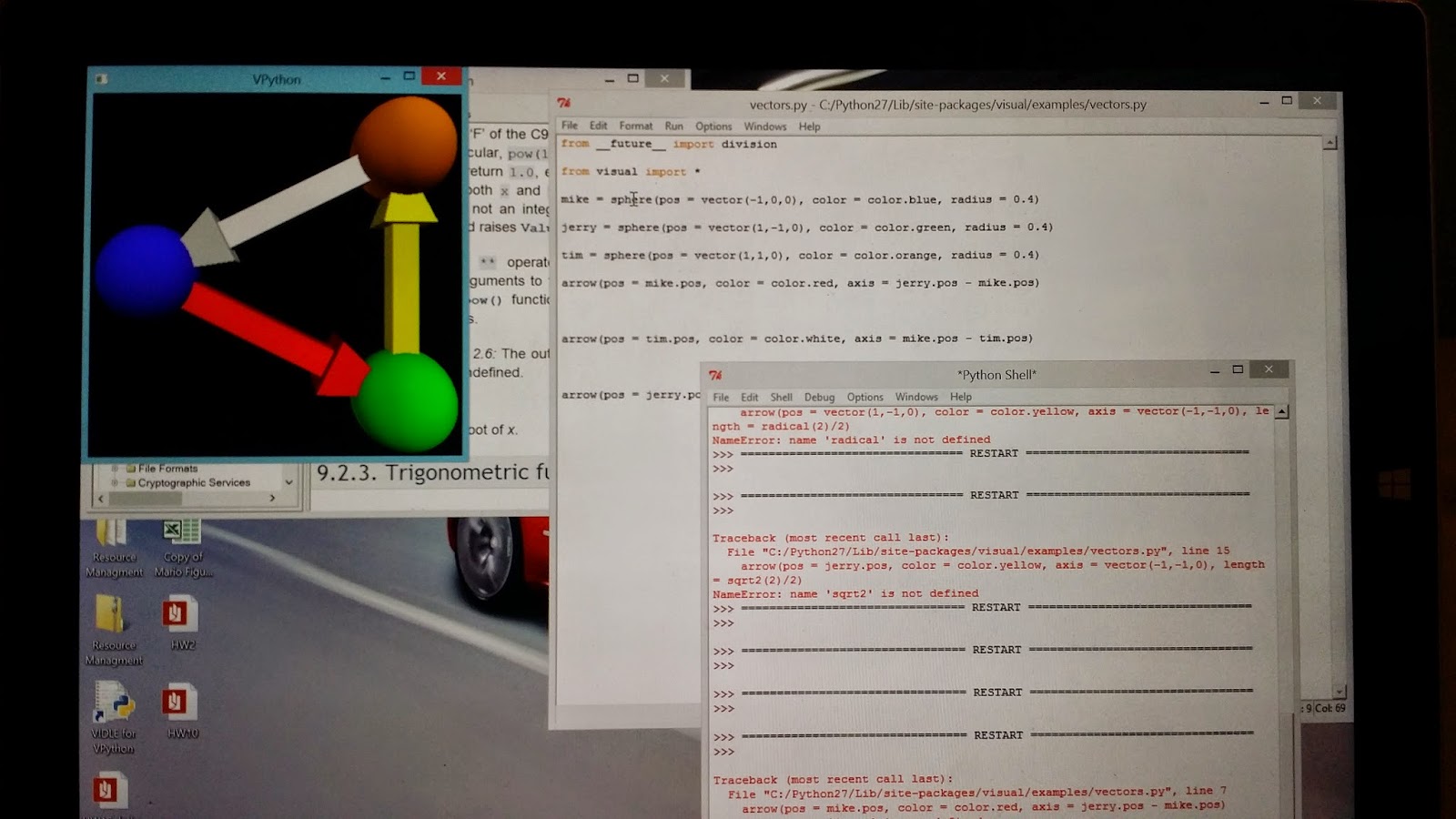Purpose: We examine how the electric field effects two charges that create a dipole. We, then, use VPython to view get a 3 dimensional representation of the electric field of a dipole. At the end, we will encounter flux.
Electric Projectile
When we look at two sheets of metal, we see that in the example given, the electric field moves in one direction. When looking at a particle that is charged and contains a velocity pointing parallel to the planes, we see that the motion it exhibits is that of a projectile.
Moment of a Dipole
Using a visual representation of a dipole in the are of the electric field, we say that a torque is create between. The dipole moment is then used to find the potential energy, as we took the integral of the moment with respect to theta, the rotational distance. We find that the dipole moment is the cross product of the separation distance by the force. We also find that the potential energy is the dot product of the moment of the dipole by the electric field.
Prediction vs. VPython
The program initially set up is displayed by the red arrows pointing to the right. The green arrows demonstrate the prediction of the electric field line of a dipole. When comparing to the VPython visual representation, we saw that our prediction was not far off. We predicted using a general idea of the sum of the electric fields.

After we finished a 2 dimensional representation of the electric field on a dipole, we went a little further and created a 3 dimensional representation of a dipole electric field.
The drawing above shows how the electric field on a dipole looks like.
Flux
We show the different ways flux is dawn, in opposite directions of the same object. We see that flux is used to determine the amount of electric field lines that pass through a surface.
Flux occurs in only 2 sides of a cube when the cube is oriented along the x,y, and z axis and when the electric field points along only one of the axis. The other surfaces are facing parallel to the electric field, cause no field lines to cross the surface. The net flux is still zero, as the flux in cancels the flux out.
Conclusion: We found that the electric field cause a charge particle to accelerate in a linear direction and even graphed a 3 dimensional representation of the electric field lines of a dipole. We can see that its a mess as many arrows shoot off into many directions. We, then, take a look at the flux. The flux is given by the electric field lines that pass through a surface, or the integral of E dot with dA.

















































